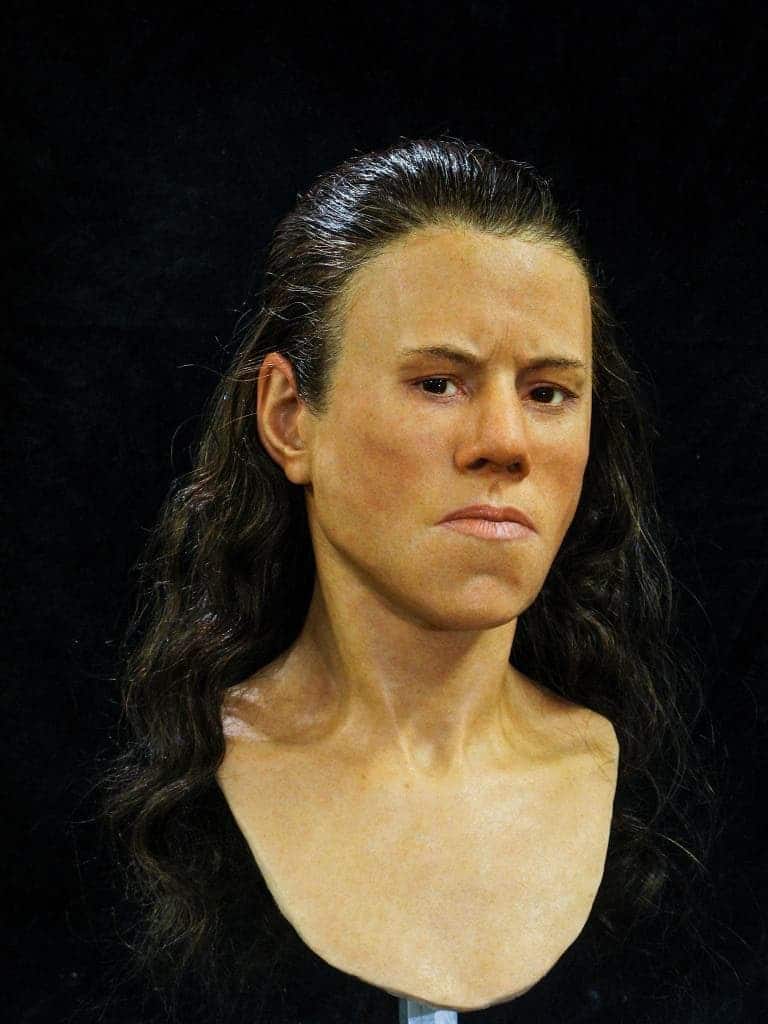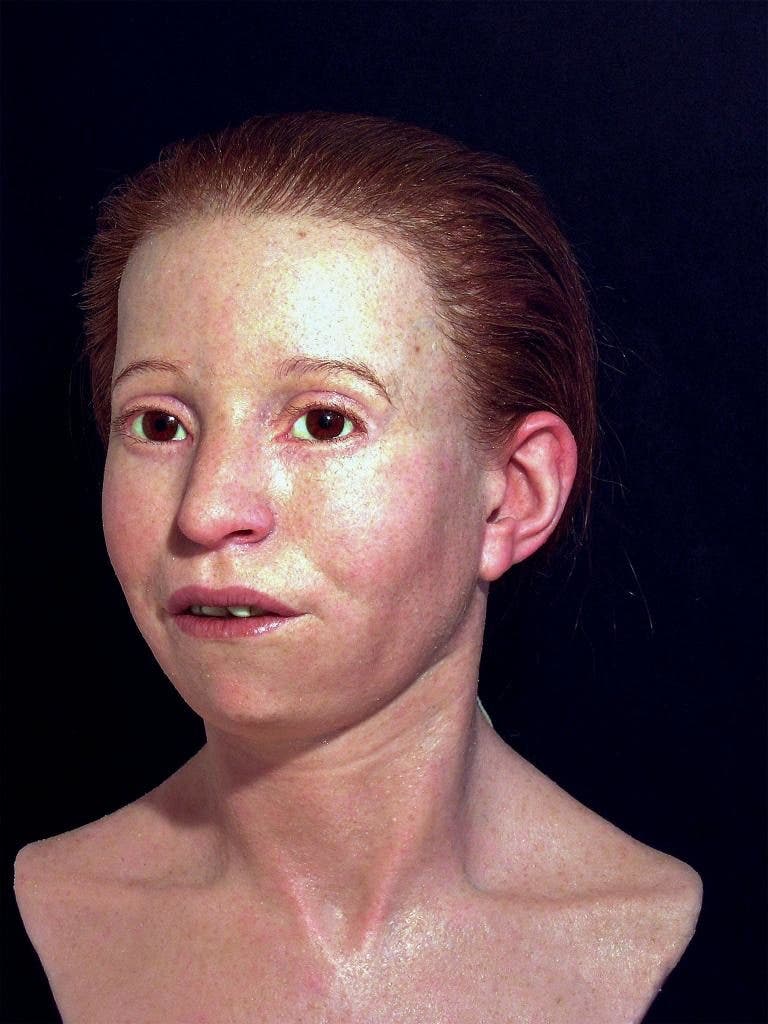Based on a skull found in a Greek cave, researchers have reconstructed how an ancient teenager might have looked like. This sheds new light on how our features evolved and softened across the millennia.
Scientists called her Avgi, which translates to Dawn in English. Some 9,000 years ago, Avgi must have had a really bad day. Not much is known about her life and what brought her demise, but no one has seen her face ever since. Yet, through careful analysis and modern technology, we are now able to see her facial features once again — her prominent cheekbones, dimpled chin, and heavy brow indicate a period much unlike our own.
The skull was found in 1993 at Theopetra cave, a site in central Greece which has been occupied continuously for some 130,000 years. The cave has been intensely studied by archaeologists and anthropologists and has yielded many important insights about the lifestyles of ancient populations.
Reconstructing Avgi’s face was a painstaking process. The team which analyzed her skull included an endocrinologist, orthopedist, neurologist, pathologist, and radiologist, working under the guidance of orthodontist Manolis Papagrigorakis, who recently unveiled the reconstructed face at the Acropolis Museum in Athens. Together, they worked with Oscar Nilsson, a Swedish archaeologist and sculptor who specializes in recreating the features of ancient people.
Long time no see
The process started with a CT scan of the skull and ended with a 3D printer recreating Avgi’s features. In between, researchers closely followed the skull for any clues it might have to offer — specifically, they looked at cues which indicate the thickness of the flesh at certain points. Bit by bit, muscle after muscle was added. Then, the remainder of the features (such as eye color and skin complexion) were assumed based on general population traits in the area.
The skull itself revealed a few surprises. Avgi’s bones appeared to belong to a 15-year-old-woman, but the teeth tell a different story, indicating that she was 18, “give or take a year,” said Papagrigorakis.
It’s not the first time Papagrigorakis and Nilsson have teamed up to bring ancient faces back to life. In 2010, they recreated the face of an ancient, 11-year-old Athenian girl named Myrtis. Unlike Avgi, Myrtis had features which are much more familiar to us today.
“Avgi has very unique, not especially female, skull, and features. Myrtis, still a child, does not differ at all in the features we find around us today,” says Nilsson. “Having reconstructed a lot of Stone Age women and men, I think some facial features seem to have disappeared or ‘smoothed out’ with time. In general, we look less masculine, both men and women, today.”
Avgi lived at an important time in human evolution — the dawn of human society, when people were just starting to grow their own food and settle down permanently. The transition to agriculture, called the Neolithic Revolution, has taken place independently many times and in many different places. In today’s Greece, it took place somewhere between 10,000 and 8,000 years ago, right as Avgi was going on with her own (unfortunately short) life.
It’s not clear exactly what killed Avgi. No obvious trauma is visible, and researchers aren’t quite sure what happened to her. Myrtis, on the other hand, was killed by a typhoid epidemic that ravaged Ancient Athens. To this day, the disease claims over 200,000 lives every year, according to the World Health Organization.
As both scanning and 3D printing technology advances, we can expect more and more detailed models to emerge. For the first time in history, we might get the chance to not only know how these people lived but also what they looked like.











